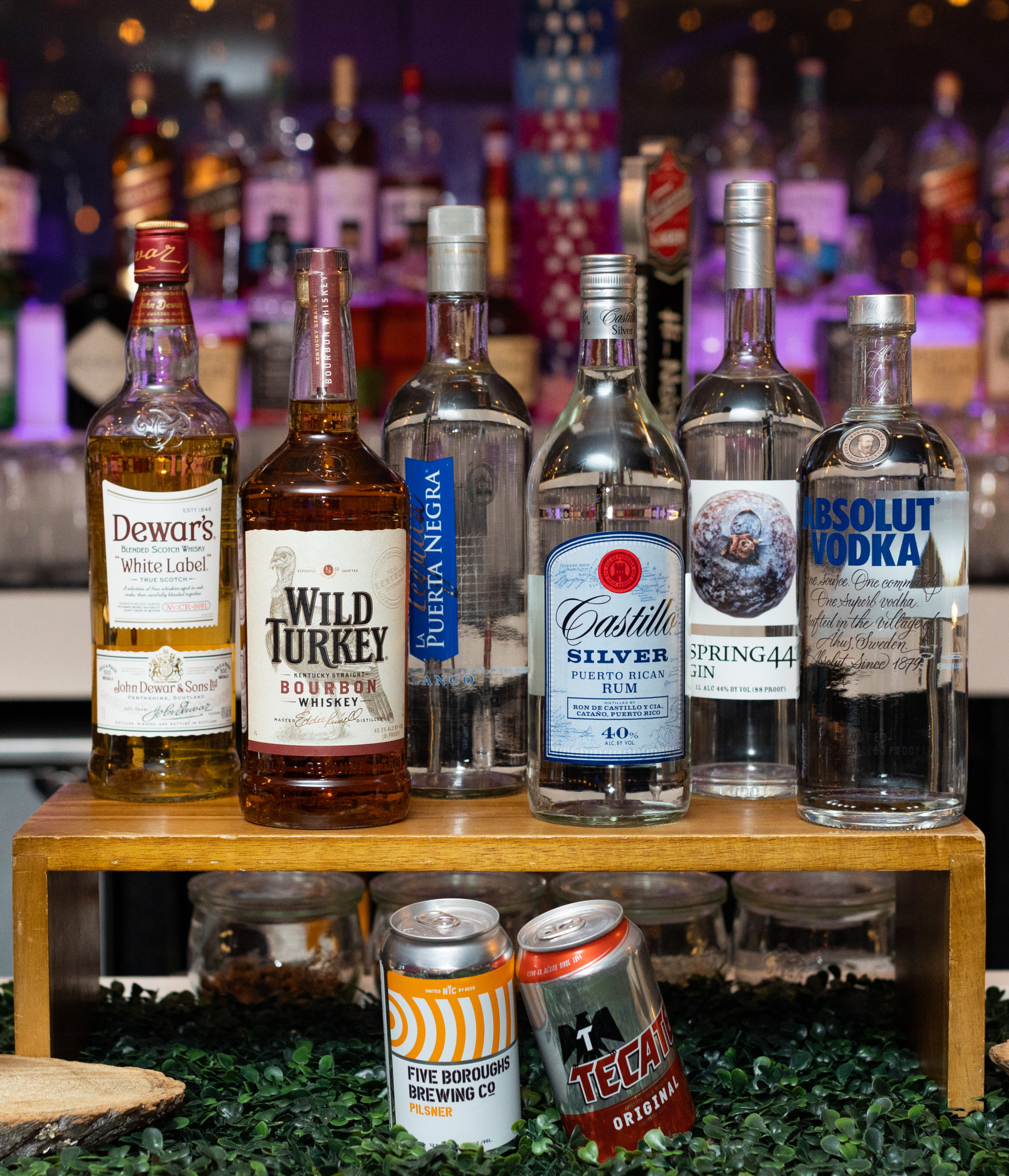written by Kevin Banas
CHICAGO – Being a part of the hospitality industry often means trying to stay ahead of what can be a dizzying broadside of trends. Shifting consumer preferences, trailblazing chefs and restauranteurs, and the perpetual need to excite and steal attention make for an environment where one must always innovate or die. Through it all, however, there is some bedrock. Foundational elements of food service that never become unpopular, and always drive a tidy profit. One of them is a nice, cold draft beer. So, what do you need to know if you wish to incorporate draft beer into your food service program?
 Equipment Basics
Equipment Basics
Many smaller operations looking to offer a fresh pint can make do with a kegerator. These are undercounter refrigerators with a set of beer taps either mounted directly on top, or with a very short run to a bar top above the cooler. These units are comparatively inexpensive and easy to install and use, but they have the drawback of having limited holding capacity, which in turn, limits your beer selection and requires frequent changing of the kegs. Bar concepts that are at least partially driven by a fresh beer program will need to rely on larger scale systems.
These larger systems begin with a dedicated walk-in keg cooler. Prospective operators should take note of that “dedicated”…many municipalities won’t allow food storage in the same cooler as a keg system, though you can still use some shelving space for the bottled or canned beverages you serve. Your dedicated keg cooler will need reinforced floors to handle the weight of full kegs (and resist damage if an employee accidentally drops one!), specialized shelving, and the connectors between kegs and your beer conduit.
The beer conduit itself is a system of tubes that runs from your kegs to the taps at your bar. They are bundled together in a trunk line and wrapped in insulation to help keep them cold. When designing your facility, it helps to work with a draft beer system provider to engineer everything; these lines can be a particular sticking point as they must be laid out so they don’t kink and restrict flow and have periodic access points to allow old lines to be replaced or repaired. Different cities also have codes pertaining to the material that can be used for the protective conduit around the lines.
Along with the beer lines, your beer conduit will have one or more lines of recirculating coolant; typically, glycol in modern systems, that will keep the beer in your lines cold. This coolant can also be utilized to chill the taps on your bar where the beer is dispensed. Keeping the beer in the conduit at a proper temperature is not only important to prevent spoilage, but also to keep the beer from going flat.
Beer that warms above 38 degrees Fahrenheit begins to lose its ability to hold CO2 in solution, resulting in those foamy, sputtering drafts you sometimes get. When using a glycol coolant in your beer lines, look for a fully enclosed system to prevent coolant loss due to leakage or evaporation.
If you have the benefit of designing a facility from scratch, try to place your dedicated keg cooler as close to the bar as possible. Beer conduit is a considerable expense and needs to be periodically flushed for cleaning (about once a month in many cities). Minimizing line runs will save equipment expense and preserve future margins.
If circumstances force you to have a very long line run, anything approaching a cumulative 400 feet of length or requiring beer to be pumped up or down elevations in the building, consult with your system designer to make sure adequate pressure is supplied.
The beer taps themselves come in a wide variety of styles, so take the opportunity to express yourself when choosing one. Many are imported, so be careful to choose something with a clear UL or ETL certification, or your local health department may not permit it in your facility.
More Than Suds
Draft systems, whether in the form of a kegerator or the larger systems we’ve described, can be used for more than just beer. Many places have house wines on tap or signature cocktails that are popular enough to justify having them on hand, pre-mixed. Non-alcoholic beverages such as cold brew and nitro-coffees, kombucha, and lemonades are often found on tap as well. All of these different beverages do present at least some logistical challenges.
Many beverages will call for a different gas besides CO2 to be used when pressurizing the keg and the conduit lines. Nitro brew coffee, lagers, and red wine may all use Nitrogen, for instance. These alternate gasses will require their own equipment considerations such as pressure regulators. Having a good sense of your menu before designing your draft system becomes important when working with your equipment supplier.
Strongly flavored beverages such as red wine or coffee may impart some of their flavor into the conduit tubing they use, making those lines unsuitable for other beverages. A limited number of manufacturers now offer higher quality conduit tubing that can resist this effect, but you will still need to thoroughly flush your beverage lines when switching between different types of beverages, or even different types of beers.
Be aware that many beverages brewed in-house, whether custom beers or even kombucha, can contain dissolved solids with the potential to damage or clog beverage lines. Make sure the company you are working with knows if you’ll be serving anything like a house brewed oatmeal stout.
Finally, there are draft liquor systems available for the truly large or extremely bustling bars out there. These systems have the benefit of making well liquors available at the push of a button from a dispenser gun, right at the bartender’s fingertips, significantly speeding up service. They can also be engineered to assist with portion control and inventory which helps maintain the crucial margins that keep liquor service profitable.
 Okay, There Are Some Trends
Okay, There Are Some Trends
Earlier, we may have described draft beer service as a foundational element in the food service industry, but to own the truth, this does not make it immune to the forces of innovation, market pressure, and trendsetting.
Modal changes in how draft beverages are served to the customer are some of the most immediately apparent trends. Improvements to the quality and consistency in draft systems, as well as portion control and POS systems, have given rise to fully self-service bars and taprooms where customers pour their own drinks and establish a tab on a keycard that they clear at the door before leaving. On a smaller scale, some restaurants now feature tables with individual taps, utilizing a similar system to allow guests to get a drink or a refill without having to flag down a server.
Draft beverage systems are not immune to market pressures either. In 2022, the world experienced a Carbon Dioxide shortage driven partially by ongoing pandemic disruptions and now, also by the war in Ukraine. Commercially produced Carbon Dioxide is primarily a byproduct of ethanol and ammonia production – many ethanol plants in the US shut down during the pandemic and still haven’t reopened, while Russia, the world’s largest producer of ammonia for fertilizer, is currently under heavy sanctions.
Every crisis has at least a kernel of opportunity, however. Large industrial brewers have long used carbon capture as a way to reduce the carbon footprint generated by their brewing processes. Companies like Earthly Labs have been working on releasing smaller scale versions of the same technology that, along with a purification process, can allow captured CO2 to be utilized for storage and service purposes while being cost-effective for microbreweries and other smaller operations.
Conclusion
A robust draft beer program can serve as the cornerstone for any number of different bar concepts. Your draft beer system can be tailored for a menu as approachable, or as sophisticated, as you need. And while beer on tap has been around for hundreds of years, that does not mean it has been stagnant or stationary. Innovative technologies are now helping to diversify menus, increase margins, and even improve sanitation. Large-scale beer programs are a significant expense, and complicated in execution, so be sure to recruit help from an experienced consultant as you ponder one; perhaps over a nice tall pint…
Kevin Banas is project manager, Cini-Little International, Inc., Chicago.
